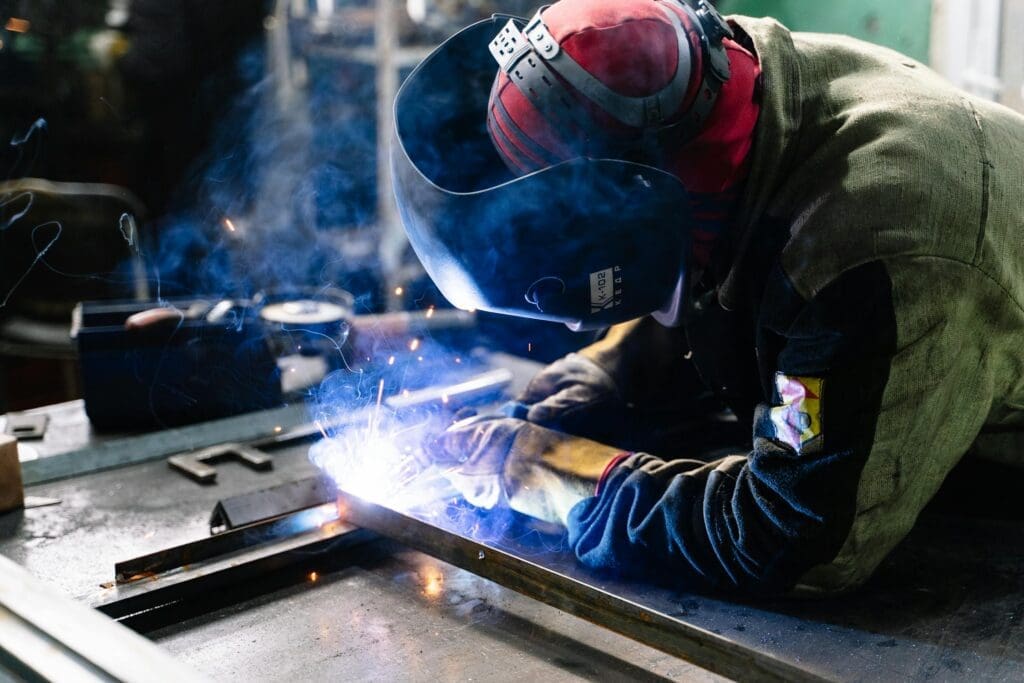Choosing the right metalworking process directly affects your finished parts’ strength, precision, and efficiency. While metal fabrication and forming may sound similar, they serve different purposes. Understanding these differences helps you avoid unnecessary costs and ensures your parts perform exactly as needed.
At Brandywine Valley Fabricators, we specialize in both metalworking techniques. Whether you’re shaping raw materials or assembling complex components, we can help you determine the best path for your project.
How Metal Fabrication and Metal Forming Differ
The main difference between metal fabrication and forming is how the metal is changed.
- Metal fabrication involves cutting, joining, and shaping metal parts to create a finished product. This may include laser cutting, welding, or machining. It’s ideal for turning raw materials like sheet metal and structural steel into fully assembled products or subassemblies. During fabrication, materials are often removed or fused together, making it ideal for custom or load-bearing structures.
- Metal forming, on the other hand, reshapes material without cutting it. It uses compressive forces to mold or bend metal into a desired shape. The metal is pressed or stretched through plastic deformation using rollers, dies, or stamping equipment. No material is added or removed, which helps conserve resources and maintain strength. This makes forming a great fit for high-volume production of uniform parts.
When to Use Metal Fabrication
Fabrication is the right choice when your design involves multiple parts that need to be joined, when exact specifications are required, or when strength and structural integrity matter most. Projects like custom frames, supports, and machine components benefit from the flexibility fabrication provides.
This method works well with various metallic materials, especially when those materials need to be cut, drilled, or welded. It’s also essential for handling detailed tasks like aligning complex geometries or adding brackets and reinforcements.
To learn more about how we deliver custom solutions, check out our metal fabrication services.
When Metal Forming Is the Better Option
Metal forming is ideal for shaping material consistently and quickly. It’s commonly used in industries where uniformity and speed are critical, such as manufacturing and automotive production. Processes like die forming and sheet metal forming reshape materials into their final form without wasting material.
You might choose to form when you need hundreds or thousands of identical parts that require no welding or cutting. These could be flat panels, curved covers, or detailed shapes that must match tight tolerances. Because forming reshapes the material rather than removing it, it helps reduce the thickness while maintaining strength and minimizing scrap.
Forming may be the best option if your project needs efficient, high-volume part production.
Why Some Projects Use Both
In many cases, combining metal forming with metal fabrication delivers the strongest results. For example, a panel may be formed into shape first, then moved into fabrication for welding, punching, or final finishing. This hybrid approach provides the benefits of both speed and precision.
At Brandywine, we streamline this process by managing both forming and fabrication under one roof. That means fewer delays, better coordination, and improved quality control from start to finish. Learn more about our approach to custom metal projects.
How to Choose Between Fabrication and Forming
The right choice depends on your project’s goals. Metal fabrication gives you more control if your design involves custom shapes, assembled parts, or specific mechanical requirements. It’s also essential when working with varied material types or thicknesses that need welding, not just reshaping.
If you’re looking to make repeatable shapes from flat materials with minimal waste, metal forming offers better efficiency. This is especially true when you’re working with lighter metallic materials or need to minimize processing time without compromising quality.
Still unsure? Our team will review your plans and recommend the method—or combination of methods—that best fits your timeline, budget, and performance needs.
Your Partner for Metal Fabrication and Metal Forming
At Brandywine Valley Fabricators, we help you choose the right metalworking method for your application. Whether you’re reshaping sheet metal, cutting precise components, or welding full assemblies, we bring experience and attention to detail to every job.
By offering both metal fabrication and metal forming, we make sure your project benefits from the right balance of speed, strength, and cost-effectiveness. From start to finish, your parts are processed with accuracy and care—so they perform exactly as you expect.
Resources:

